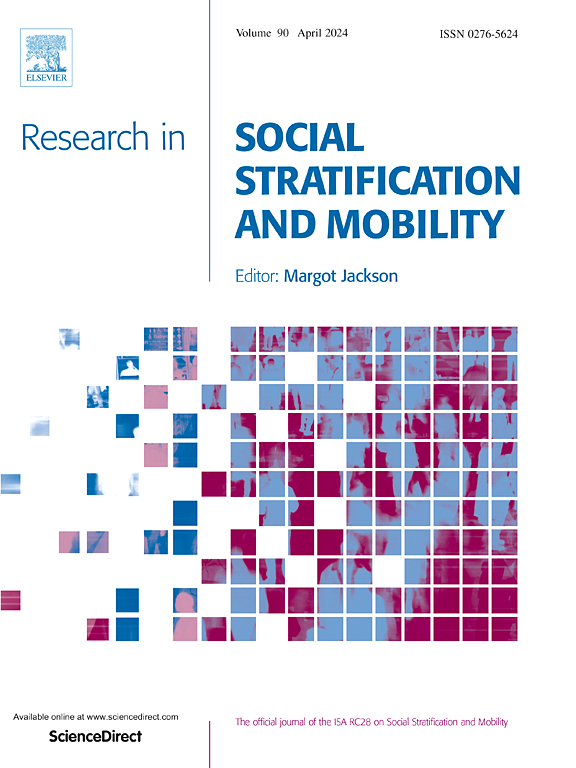法国和美国五十年的婚姻分门别类——教育扩张的作用和教育中不断变化的性别失衡
IF 2.7
1区 社会学
Q1 SOCIOLOGY
引用次数: 0
摘要
在过去的半个世纪里,高等教育的扩张和教育中性别失衡的变化重塑了伴侣市场的教育构成。尽管如此,这些同时出现的趋势对工会和婚姻中的教育分类的影响仍不清楚。利用法国(1962-2011)和美国(1960-2015)的数据,我们研究了(a)教育扩张和(b)不断变化的性别教育关联如何影响婚姻和非婚姻异性结合中排序结果的变化。反事实分解技术揭示了两个主要趋势。首先,不断变化的性别教育关联——除了教育水平的提升——促进了低配偶制(女方比男方受教育程度高)的增加和多配偶制(男方受教育程度比女方高)的减少。其次,教育扩张与受教育程度较高的个体的同性婚姻、次等婚姻和多配偶婚姻的比例上升有关,而与受教育程度较低的女性和男性的这些婚姻类型的比例下降有关。然而,这些变化对同性婚姻和异性婚姻总体趋势的影响因国家而异。例如,虽然受过高等教育的个人供应的增加促进了法国的一夫多妻制,但它抵消了美国的一夫多妻制。我们的研究结果为目前关于教育扩张的结构性影响和扭转教育中性别不平衡对不同性别联盟形成的影响的争论做出了贡献。本文章由计算机程序翻译,如有差异,请以英文原文为准。
Five decades of marital sorting in France and the United States – The role of educational expansion and the changing gender imbalance in education
Over the past half-century, higher education expansion and changing gender imbalances in education have reshaped the educational composition of the partner market. Nonetheless, the impact of these concurrent trends on educational sorting in unions and marriages remains unclear. Using data from France (1962–2011) and the US (1960–2015), we examined how (a) educational expansion and (b) the changing gender-education association contributed to changing sorting outcomes in marital and non-marital different-sex unions. Counterfactual decomposition techniques revealed two main trends. First, the changing gender-education association – apart from educational upgrading – has promoted rising hypogamy (she is more educated than he) and declining hypergamy (he is more educated than she). Second, educational expansion is associated with rising proportions of homogamous, hypogamous, and hypergamous unions involving more educated individuals and declines in these union types with less educated women and men. However, the impact of these changes on overall homogamy and heterogamy trends differs across countries. For example, while the increasing supply of highly educated individuals has promoted hypogamy in France it has offset hypogamy in the US. Our findings contribute to ongoing debates about the structural effects of educational expansion and the reversing gender imbalance in education on the formation of different-sex unions.
求助全文
通过发布文献求助,成功后即可免费获取论文全文。
去求助
来源期刊
CiteScore
7.80
自引率
6.00%
发文量
46
期刊介绍:
The study of social inequality is and has been one of the central preoccupations of social scientists. Research in Social Stratification and Mobility is dedicated to publishing the highest, most innovative research on issues of social inequality from a broad diversity of theoretical and methodological perspectives. The journal is also dedicated to cutting edge summaries of prior research and fruitful exchanges that will stimulate future research on issues of social inequality. The study of social inequality is and has been one of the central preoccupations of social scientists.

 求助内容:
求助内容: 应助结果提醒方式:
应助结果提醒方式:


